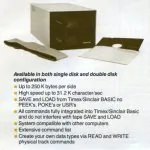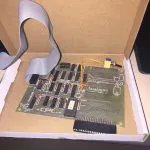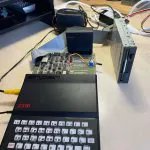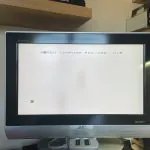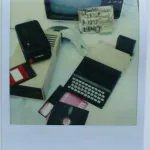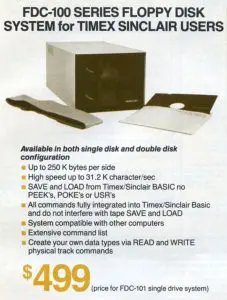Floppy disk controller with disk operating system in EPROM. The controller plugs into the edge connector of the computer, drawing power from the computer and has cables for interface with two floppy disk units.
The controller works with standard Shugart disk drives—single and double density, single and double sided. User interface with the control is accomplished with the Sinclair LOAD and SAVE commands by using, in place of standard file names, commands to the disk. PEEKs and POKEs are not required.
Supports both program and data storage. Program chaining, i.e., LOADing a self-running program from within a running program, is supported. Additionally, the DOS can LOAD data directly into, and SAVE data from a variable, providing data input/output capabilities. Program storage requires one track per program. A 35-track double-density disk will hold 35 6K programs or program segments. The DOS is memory mapped into the 12-16K region, but can be configured into locations 8-12K.
DOS commands include: INITIALIZE, DSAVE, DLOAD, NEWD, DIRECTORY, STAT, READ, WRITE, KILL, CREATE. Loads 8K program in 10 secs; saves 8K file in 20 secs, with verify.
Sold as three model numbers:
- FDC-100: interface board, cable connector and user manual.
- FDC-101: with a 40 track, single-sided, double-density (SSDD) disk drive, power supply and case that can hold two drives.
- FDC-102: Identical to FDC-101 but with two drives.
Origin
The FDC-100 was originally developed by Analogue Information Systems, in the UK, for the ZX-81. Developers Peter Balch and Paul Cockshott worked with Compusa to adapt it for the US market.
They sold a very small number in the UK before the project was taken over by Compusa.
At the time, many floppy disc controllers used a specialized disc controller chip. To save money on the design, the read and write logic was encoded as a finite-state machine (FSM) in an EPROM. The outputs of the EPROM were connected to its address lines via a latch. The FSM could do MFM encoding, one of popular disc recording techniques.
